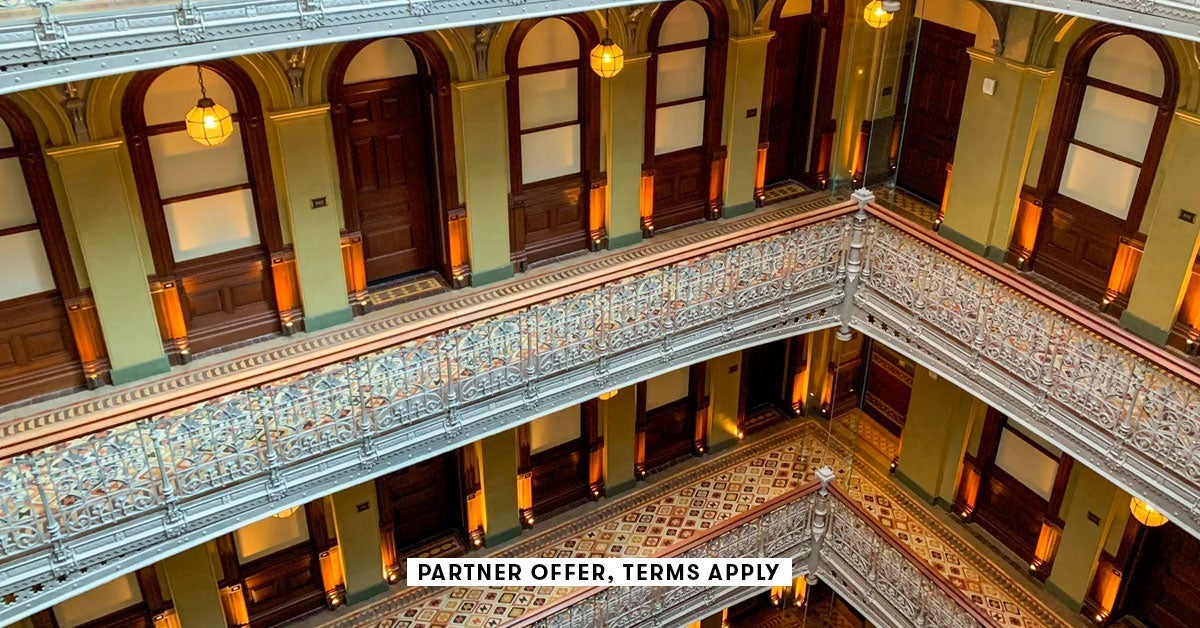Some ruins are gentle ghosts, places that simply faded with time. Others are scars on the landscape, violent testaments to ambition, war, and betrayal. Ashby de la Zouch Castle is emphatically the latter.
To stand before its shattered towers is to witness a story frozen in stone—a tale of a man who reached for absolute power, only to have it snatched away in a single, brutal moment.
This is not just the story of a building; it is the story of the Wars of the Roses, of a king’s closest friend, and of a grand vision cut short by the executioner’s axe.

When I visit Ashby Castle ruins, even on so called busy days, I find it a very peaceful place. I find that walking amongst the history like this is captivating and thought provoking at the same time a good escapism from the hustle and bustle in the towns.
I. From Humble Manor to a Lord’s Grand Design
Long before the first stone of the great towers was laid, the site at Ashby was a place of quiet significance.
A manor at ‘Aschebie’ is recorded in the Domesday Book of 1086, and for centuries it remained a relatively modest, if high-status, manor house.

First held by the Earls of Leicester, it was granted to the le Zouch family in the 12th century, nobles of Breton descent who gave the town its distinctive suffix.
For over 200 years, they developed the site, replacing early timber structures with a stone hall and solar, but it remained what it was: a fortified country home, not a fortress.
Its destiny was violently rewritten in 1462. In the brutal aftermath of the Wars of the Roses, King Edward IV granted the estate to his most loyal and trusted confidant, William, Lord Hastings.

Hastings was no mere courtier; he was the king’s Lord Chamberlain, a powerful political operator who had fought alongside Edward and was rewarded with immense wealth and near-regal authority over the Midlands.
A man of such stature needed a seat that broadcast his power, a symbol of his dominance that could be seen for miles around. He chose Ashby.
In 1474, Hastings was granted a licence to crenellate—to fortify—his manor, and he began one of the most ambitious private building projects of the age.

This was not to be a simple upgrade. Hastings’ vision was breathtaking. He planned a perfectly symmetrical, four-cornered fortress, a design that would have placed Ashby in the same architectural league as the greatest castles in the kingdom.
He enclosed a vast 3,000-acre deer park, an act that was as much a statement of aristocratic control over the landscape as any stone wall.
At the heart of this new fortress was to be the magnificent Hastings Tower.

Rising over 90 feet, this was a masterpiece of late-medieval design—effectively a ‘castle within a castle’. It was not merely a defensive keep but a luxurious, self-contained residence, complete with a great chamber, withdrawing chambers, a buttery, pantry, and its own kitchen.
It was designed to provide the ultimate in security and comfort for Hastings and his family, a secure final refuge within an already formidable stronghold.

II. The King is Dead: Ambition and Execution
Lord Hastings was a man at the apex of his power, building a monument to his success and his seemingly unshakeable position.
But in 15th-century England, fortunes could turn with terrifying speed. In April 1483, King Edward IV died suddenly, and the political landscape shifted seismically.
Hastings was fiercely loyal to Edward’s young heirs. This placed him in direct opposition to the dead king’s brother, Richard, Duke of Gloucester, who had his own designs on the throne.
Hastings was the single greatest obstacle to Richard’s ambition, and Richard was not a man to be trifled with.

The end came with shocking brutality. On the 13th of June 1483, at a council meeting in the Tower of London, Richard accused Hastings of treason.
There was no charge, no trial, no conviction. Hastings was dragged from the council chamber and summarily beheaded on a block of wood. It was a ruthless political assassination that cleared Richard’s path to becoming King Richard III.
With Hastings’ death, the hammers at Ashby fell silent. The grand project was brought to an abrupt and permanent halt.
Of the four mighty towers he had envisioned, only the great Hastings Tower and the smaller Kitchen Tower were ever completed.
The castle was left unfinished, a half-realised dream, its very stones a memorial to the man who built it and the brutal politics that destroyed him.

III. A Fortress in Conflict: The Civil War and Deliberate Destruction
Though incomplete, the castle remained the primary seat of the Hastings family for another 160 years.
It was prestigious enough to be used for the imprisonment of Mary, Queen of Scots, in 1569. But its next great trial would come during the English Civil War.
Its strategic position, linking Royalist territories in the north and west, made it a vital stronghold for the cause of King Charles I.
Henry Hastings, a younger son of the family, became a key Royalist commander and based himself at the castle. For years, it held out against Parliamentarian forces, a stubborn bastion of royal power.
After a long and arduous siege, the garrison was finally forced to surrender in March 1646.
The Parliamentarians, recognising the immense strength of the fortifications, gave a stark order: the castle was to be “slighted”.
This was not mere vandalism; it was deliberate, strategic destruction. Using gunpowder and undermining, engineers blew out the sides of the two great towers, collapsing them and rendering the castle militarily useless for all time.
The jagged, torn stonework we see today is the direct result of this act, a permanent scar from one of England’s most destructive conflicts.

IV. A Literary Legend and a Modern Marvel
For more than a century and a half, the castle was left as a romantic, crumbling ruin. Its fortunes were revived not by a lord or a king, but by a novelist.
In 1819, Sir Walter Scott published his wildly popular historical novel, Ivanhoe, and set a pivotal tournament scene at Ashby de la Zouch Castle.
The book was a sensation, and it single-handedly created a new industry for the town: tourism.
Regency-era visitors, captivated by the romance of the story, flocked to see the real-life setting.
The town capitalised on this newfound fame, building the Ivanhoe Baths spa and the grand Royal Hotel to accommodate the literary pilgrims, forever linking the castle’s identity with Scott’s fiction.
Today, managed by English Heritage, the castle offers a captivating journey through these many layers of history.
The primary thrill is climbing the 98 steps to the top of the slighted Hastings Tower, which offers breathtaking views over the town and countryside.

Just as compelling is the chance to explore the authentic underground passage, likely dug during the Civil War siege, that connects the kitchen to the base of the tower.
Far from being a simple drain, this is a genuine piece of military history, a dark, atmospheric tunnel that speaks of desperation and defence.

The extensive grounds, which include the remains of an early Tudor garden with mysterious sunken features, are perfect for exploring and imagining the castle in its heyday.

An excellent audio guide brings the dramatic history to life, telling the story of the powerful men who built it, fought for it, and ultimately, destroyed it.
It is a place where you can stand in the shadow of immense ambition and feel the echoes of history all around you.
It is also a place that attracts bird lovers too. It is a place that Peregrine Falcons have made their presence as well.
We have another castle article about a castle, in Cumbria, connected to Richard III: Penrith Castle: How a Future King Built His Palace in a War Zone
For another fascinating historic park and grounds to visit in the area then take a look at Bradgate Park: A Gem Of Leicestershire



















 English (US) ·
English (US) ·